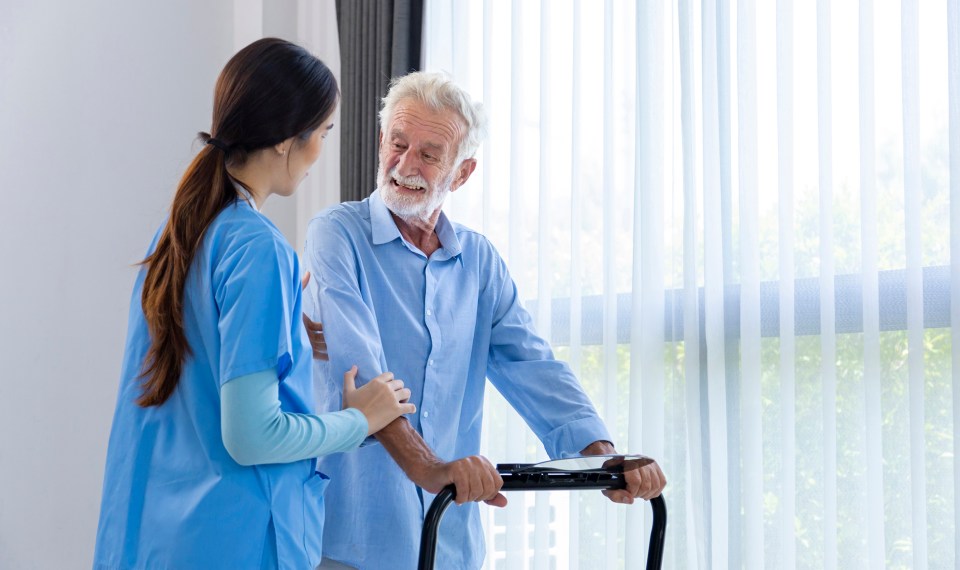Working in a hospital setting is highly specialized and unlike any other profession. Though rewarding, it can also be highly stressful—now more so than ever.
During the COVID-19 pandemic, healthcare workers have more on their plates and are being asked to protect others at the risk of their very own health. They’ve more than stepped up to the challenge and proven that they are in fact every day heroes.
While it appeared the world was returning to a new normal, new variants of the virus are filling hospitals, challenging healthcare workers more than ever. Healthcare professionals are still working under highly unusual and stressful circumstances as they continue to treat COVID-19 patients. It’s at this time that compassion can run thin, but there are ways to avoid what is commonly referred to as compassion fatigue.
What is the difference between burnout and compassion fatigue?
Compassion fatigue is related to but different from burnout. Burnout comes from the external environment, such as long work hours, insufficient time to spend with patients and constant change in documentation and policy requirements. Compassion fatigue is a condition characterized by emotional and physical exhaustion leading to a diminished ability to empathize or feel compassion for others. It is often described as the negative cost of caring. It is a result of absorbing and internalizing the emotions of patients and, sometimes, coworkers. It is sometimes referred to as secondary traumatic stress.
It can cause a dedicated, highly trained and compassionate healthcare worker who has always seemed enthusiastic and engaged with their patients and coworkers to become disconnected and less compassionate or seem to be just going through the motions. Some researchers have described it as a debilitating weariness brought about by repetitive, empathic response to pain and sufferings. Often, to cope with this stress, caregivers build emotional walls to avoid the hurt of the pain and suffering of their patients.
There is a significant overlap between compassion fatigue and burnout symptoms. These include:
- Decreased concentration
- Minimization of one type of loss over another
- Preoccupation with trauma
- Withdrawing
- Isolating
- Loss of purpose
- Impaired immune system
- Bottled-up emotions
- Substance abuse to mask feelings
- Mental and physical tiredness
- Being in denial about problems
Keeping empathy alive
So how do you keep that compassion and empathy alive in an emotionally draining environment? Elizabeth Mills, a critical care nurse in North Carolina, has found that a supportive work environment that includes peer support and counseling helps tremendously. She finds that when she is having trouble feeling compassion or empathy for a patient, she makes a special effort to learn something about them, such as what kind of work do they do, where they grew up or a personal story they would like to share. Mills said this helps her get back to the fact that this is a person with a life.
It is also important to know the signs and symptoms and to practice self-awareness and self-monitoring. Recognizing changes in behavior, work and life outside of work is the first step to preventing compassion fatigue.
Developing either informal or formal supervisory and mentor relationships within your work environment can also help you spot when you are being affected by compassion fatigue. People experiencing compassion fatigue may also seek the professional support of a mental health clinician to help them overcome difficult thoughts and emotions and focus on healthy coping mechanisms.
Employers should be aware that compassion fatigue exists and have professional development, training and supervision in place to help employees during and after compassion-driven work.
(SOURCE: US News and World, April 27, 2016, Lisa Esposito; Compassion Fatigue in Health Care Providers Pak Armed Forces Med J 2015; 65(2): 286-89)
The Compassion Fatigue Awareness Project© offers original training materials, workbooks and texts through the parent organization, Healthy Caregiving LLC.
You may visit the site at www.healthycaregiving.com.
The content of this site is for informational purposes only and should not be taken as professional medical advice. Always seek the advice of your physician or other qualified healthcare provider with any questions you may have regarding any medical conditions or treatments.



